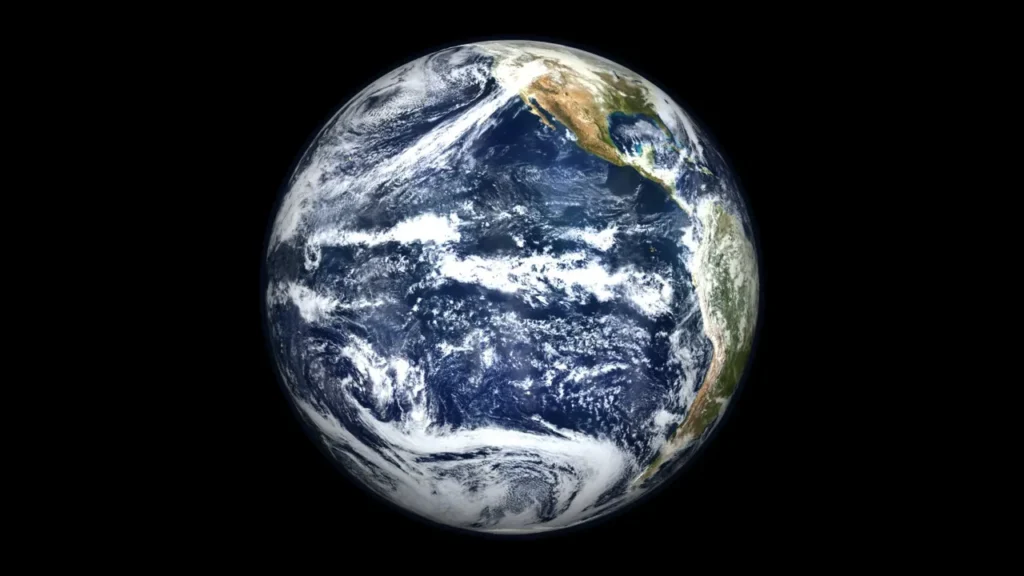Daily News
NASA’s Earth Science Mission: Deciphering Climate Change
NASA’s Earth Science Missions: Exploring greenhouse gases and climate change to advance our understanding of our changing planet.

Credits: NASA
NASA has recently chosen four proposals for concept studies of missions to help advance our understanding of key areas in Earth science. These missions will focus on topics such as greenhouse gases, the ozone layer, ocean surface currents, and changes in ice and glaciers around the world.
The selection of these proposals is part of NASA’s Earth System Explorers Program, which conducts space science missions based on recommendations from the National Academies of Sciences, Engineering, and Medicine. The program aims to enable high-quality Earth system science investigations focused on previously identified targets. In this case, NASA is prioritizing the study of greenhouse gases.
Nicky Fox, associate administrator of NASA’s Science Mission Directorate, emphasizes the importance of these proposals in the face of our changing climate. As we continue to confront the challenges posed by climate change, the need for data and scientific research becomes even more crucial. These proposals will help us better prepare for the present and future challenges we face.
The first step in the selection process involves each of the chosen proposals receiving $5 million for a one-year mission concept study. After this study period, NASA will select two proposals to move forward with, expecting to launch these missions in 2030 and 2032. The total cost for each selected investigation is capped at $310 million, not including the rocket and access to space, which will be provided by NASA.
NASA has been at the forefront of Earth observations for over 60 years, and most of our current knowledge about our changing planet comes from these observations. With over two dozen Earth-observing satellites and instruments currently in orbit, the missions ultimately chosen from these proposals will contribute to this vast Earth observatory. Together, these missions provide complementary information on Earth’s oceans, land, ice, and atmosphere.
Let’s take a closer look at the four proposals selected for concept studies:
- The Stratosphere Troposphere Response using Infrared Vertically-Resolved Light Explorer (STRIVE):
Led by Lyatt Jaegle at the University of Washington in Seattle, this mission aims to provide high-resolution measurements of temperature, atmospheric elements, and aerosol properties from the upper troposphere to the mesosphere. It also seeks to measure ozone and trace gases to monitor and understand the recovery of the ozone layer. - The Ocean Dynamics and Surface Exchange with the Atmosphere (ODYSEA):
Led by Sarah Gille at the University of California in San Diego, this satellite mission aims to measure ocean surface currents and winds simultaneously. By improving our understanding of air-sea interactions and surface current processes, ODYSEA will contribute to our knowledge of weather, climate, marine ecosystems, and human well-being. - Earth Dynamics Geodetic Explorer (EDGE):
Led by Helen Amanda Fricker at the University of California in San Diego, this mission focuses on observing the three-dimensional structure of terrestrial ecosystems and the surface topography of changing glaciers, ice sheets, and sea ice in response to climate change and human activity. EDGE aims to continue the measurements currently taken by ICESat-2 and GEDI. - The Carbon Investigation (Carbon-I):
Led by Christian Frankenberg at the California Institute of Technology in Pasadena, this investigation seeks to measure greenhouse gases and potentially quantify ethane simultaneously. By providing unprecedented spatial resolution and global coverage, Carbon-I will contribute to our understanding of the carbon cycle and the global methane budget.
These selected proposals represent NASA’s commitment to advancing our understanding of Earth’s changing climate. With these missions, NASA continues to play a crucial role in providing the data and scientific research needed to tackle the challenges we face today and in the future.
For more information about the Earth System Explorers Program, visit:
